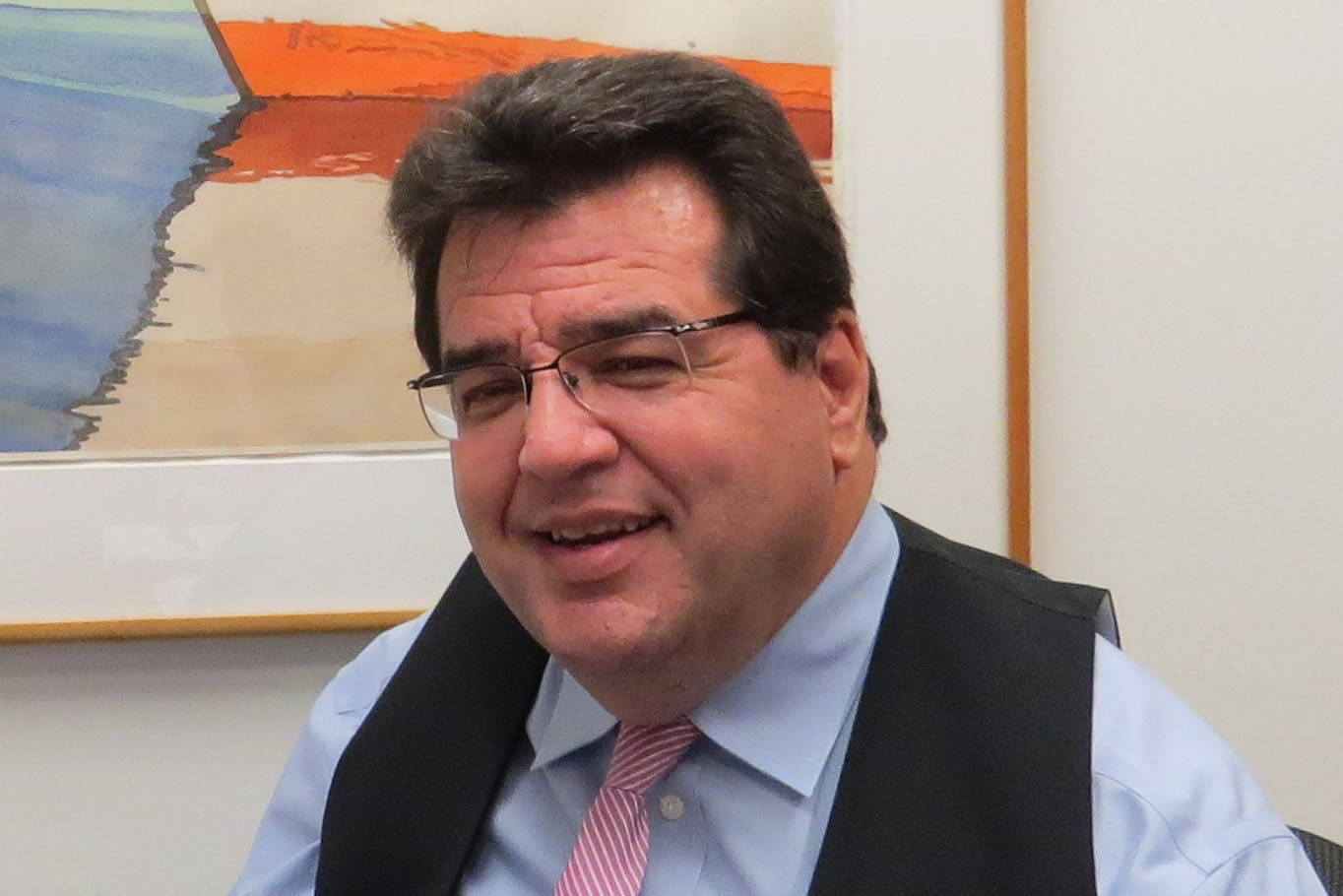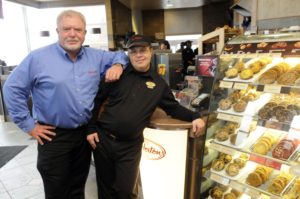An Interview with Jim Sinocchi, Head of JPMorgan Chase’s Office of Disability Inclusion
By Joan Leotta
 Industry standard-bearer, JPMorgan Chase & Co., has further cemented its commitment to diversity and inclusion with the hire of James (Jim) Sinocchi, Head of the Office of Disability Inclusion. A vanguard in his own right, Sinocchi has promoted disability inclusion awareness for decades. In this new position, he will partner with JPMorgan Chase’s senior leaders to establish consistent standards and processes supporting employees with disabilities and employees who care for family members with disabilities. Prior to joining JPMorgan Chase, Sinocchi served as the co-chair of the IBMers with Disabilities Global Task Force. While there, he collaborated across multiple internal and external channels to create awareness and understanding of policies, initiatives, and Human Resources and Diversity programs. Sinocchi uses his considerable skillset to serve the community as a board member of organizations committed to supporting people living with disabilities. His business acumen makes him sought-after, but his empathy and passion have made him a pioneer. Since 1980, Sinocchi has lived with C5-C6 quadriplegia, the result of a New Year’s Eve surfing accident. In this month’s SMG Profile, Jim reflects on the intangibles and tangibles that sustain innovation and inclusion in the workplace.
Industry standard-bearer, JPMorgan Chase & Co., has further cemented its commitment to diversity and inclusion with the hire of James (Jim) Sinocchi, Head of the Office of Disability Inclusion. A vanguard in his own right, Sinocchi has promoted disability inclusion awareness for decades. In this new position, he will partner with JPMorgan Chase’s senior leaders to establish consistent standards and processes supporting employees with disabilities and employees who care for family members with disabilities. Prior to joining JPMorgan Chase, Sinocchi served as the co-chair of the IBMers with Disabilities Global Task Force. While there, he collaborated across multiple internal and external channels to create awareness and understanding of policies, initiatives, and Human Resources and Diversity programs. Sinocchi uses his considerable skillset to serve the community as a board member of organizations committed to supporting people living with disabilities. His business acumen makes him sought-after, but his empathy and passion have made him a pioneer. Since 1980, Sinocchi has lived with C5-C6 quadriplegia, the result of a New Year’s Eve surfing accident. In this month’s SMG Profile, Jim reflects on the intangibles and tangibles that sustain innovation and inclusion in the workplace.
SMG: When did JPMorgan Chase institute the Office of Disability Inclusion?
Sinocchi: JPMorgan Chase has for years worked on improving access to people with disabilities and fostering a culture of inclusion for employees. The company long sought to improve the employee experience, engage with outside organizations (particularly with advocacy organizations), products, and services for people with disabilities. One of our nine firm-wide business resource groups is dedicated to providing a voice for employees with disabilities and those who serve as caregivers.
A little over a year ago, our executives decided they needed to take the step of creating an Office of Disability Inclusion to increase focus on matters related to employee accessibility and drive consistency in our methodology, standards and practices.
SMG: Jim, when did you join the company?
Sinocchi: I joined in June 2016.
SMG: How has the direction of disability inclusion changed over the last twenty years?
Sinocchi: The mindset of companies 20 years ago was, “Let’s hire people with disabilities. Let’s give them jobs.” Today’s mindset – at forward-thinking companies – is, “Let’s hire people with disabilities, and see who among them has leadership potential.” Stereotypes and attitudes have changed and people with disabilities are being promoted to middle and upper management roles. However, people with disabilities continue to face barriers to equal opportunity at work.
I use The Four A’s to serve as a roadmap for hiring people with disabilities and enabling them to contribute to the company, and the country. The Four A’s are: Attitude, Accommodations, Accessibility and Assimilation. If companies work on those four areas, they’ll become part of the new era of hiring people with disabilities and enabling them to contribute to the company and the country.
SMG: How did you develop the Four A’s? Why do you like it as an approach for inclusion?
Sinocchi: I was trying to come up with an answer to the question: “How can a company make someone with a disability feel truly comfortable and help that individual succeed?” Companies can teach people with disabilities how to be leaders just as they do with able-bodied people. When people with disabilities are seen as C-suite leaders, accessibility and inclusiveness will enrich that company’s culture.
We can also teach managers and executives to recognize leadership potential in a person with a disability. Here’s a secret: it’s the same methodology used with an able-bodied person. That acknowledgment alone will change paradigms and break the glass ceiling for the employee with a disability. We’ve done it with gender, with orientation, with race, with religion – but we haven’t done it – yet – for people with disabilities.
Assimilation will be the real game changer – the mark of a great company. When people with disabilities can assimilate with their able-bodied colleagues, when people talk to a colleague with a disability and don’t think about their disability, we will know we’ve made a lasting difference.
SMG: How do the four A’s work, specifically at JPMorgan Chase? Has disability inclusion changed at JPMorgan Chase since the Office of Disability Inclusion began?
Sinocchi: JPMorgan Chase looks at the whole employee when they join the company. We look first at what the individual can contribute to both the company and our clients. We make it clear that we want people for their intellectual capacity and talent and we will do everything we can to accommodate them in a reasonable manner.
The Four A’s codifies this though, making it easy for people to understand what we’re trying to accomplish. Rather than use medical jargon or scientific data, The Four A’s are already in people’s vocabulary and represent the standard dictionary definition of each word; it’s straightforward so that people who manage and work with colleagues with disabilities realize it’s just about how we treat people and make sure we’re not afraid of being politically incorrect.
To help break down the barrier of “political correctness,” we launched a video series called “The Disability Dialogues,” where senior managers sit down with employees who talk about their disabilities. They speak openly about challenges they face and any they’ve overcome at work, and invite colleagues to ask questions they may have once been afraid to ask.
The Office of Disability Inclusion is a global, firm-wide operation. Our company has offices in more than 60 countries and reasonable accommodations are a part of how we do business around the world. So, if a candidate has the talent and skills to do a job well, we want them. And, we will provide as many tools as we can to help them do their jobs to the best of their abilities.
SMG: Can you share any data on the number of company employees who identify as having a disability? Has that number increased since the Office of Disability Inclusion began operations?
Sinocchi: As you imply in your question, disability is something that people self-identify. We know that many have disclosed their disabilities for the first time since the Office of Disability Inclusion was established. And we know that many were afraid to disclose their disabilities because they thought it might hinder their career. But we also know that we have more employees who are still getting comfortable with self-identifying and we’re working on making sure that they know we can help set them up for success. On the flip side, our employees who work with and manage people with disabilities are also adjusting to the new environment of openness where employees are self-identifying and openly speaking about their disabilities.
SMG: Are there any partnerships with disability organizations that make the Office more effective?
Sinocchi: JPMorgan Chase has an Office of Nonprofit Engagement (called ONE internally), which reaches out to specific communities and serves as a central point of contact for those communities to reach out to us as well. ONE has a robust and growing program to engage nonprofit organizations dedicated to helping people with disabilities lead full and barrier-free lives. Through ONE, we partner with many of the nation’s leading disability organizations to raise awareness of and provide solutions to some of the challenges facing specific communities. This level of formalized engagement gives our business leaders and product developers’ valuable information about how we can better serve our customers and employees.
SMG: Have you developed any innovative training techniques that you would like to share—for the other employees as well as for the employee with a disability to form an integrated workforce? How do you think this will affect conversation on disability in the workplace?
Sinocchi: We’ve been focused on creating a culture that encourages conversations about disabilities, which we believe will help to accomplish the fourth A: Assimilation. The more people can talk openly about disabilities, the more it means that able-bodied people can see beyond the disability and people with disabilities feel at ease.
